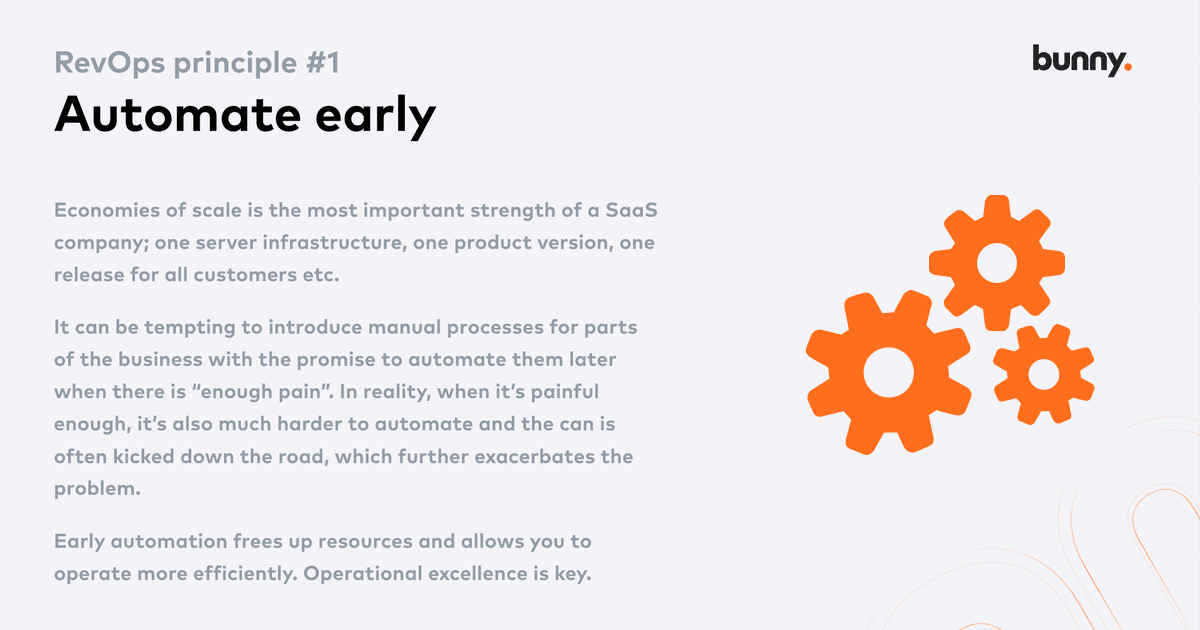Principles of RevOps
Elevate your SaaS business with these simple principles
1. Automate early
It’s easy to introduce manual processes. Undoing them can be much harder because of the unstructured data they produced. When you close your first sales-led deal, the customer is typically invoiced out of your accounting application, such as QuickBooks.
Then you close a few more deals. No problem. One of those customers now wants to buy more users, so you create an amendment to the contract and send an invoice for the prorated remainder of the current term. See where this is going?
Before you know of it, unstructured data piles up and complicates renewals, invoicing, revenue recognition and your SaaS metrics.
Automating early pays off in dividends because it produces clean data, enables associated processes to be automated, and allows you to focus resources elsewhere.

2. Product catalog first
The product catalog is so critical for a SaaS company because of the inherent complexity of enterprise subscriptions. Once a deal has been priced and closed, the real work begins. Upgrades, quantity changes, renewals, and add-ons all complicate billing, tenant provisioning and revenue recognition.
If your business is both PLG and SLG, subscription changes can be driven by either the customer or by salespeople, and you want to ensure that both revenue streams are driven by the same engine, which is often not the case. Many SaaS companies run PLG through Stripe and SLG via QuickBooks/Xero/NetSuite, which means more manual processes and less automation.
By getting a powerful product catalog into your business early, that sweet automation will pay big dividends over time.

3. Decouple platform and pricing
Most startups hard-code pricing into the platform itself, which means that any change in price or feature composition for a plan requires a code release. This tight coupling has several drawbacks.
When pricing changes, a new release is required, which may not be such a big deal in itself. But what happens to the existing customers? Are they moved to the new pricing or grandfathered? More code is required to deal with this scenario.
As you start landing larger deals based on quotes, discounts are expected and invoicing now needs to be handled manually by accounting. Now your revenue and metrics are bifurcated, which introduces more reconciliation work. The manual billing also introduces the risk that tenants are not compliance with their contracts as a result of data entry errors.
And lastly, hard-coded pricing also prevents you from easily experimenting with pricing and packaging, which a key part of finding product/market fit in the early stages of a company.
Ideally, the platform should only be concerned about which features a tenant has. Pricing and packaging belongs in the billing system’s product catalog where you have the necessary flexibility.
